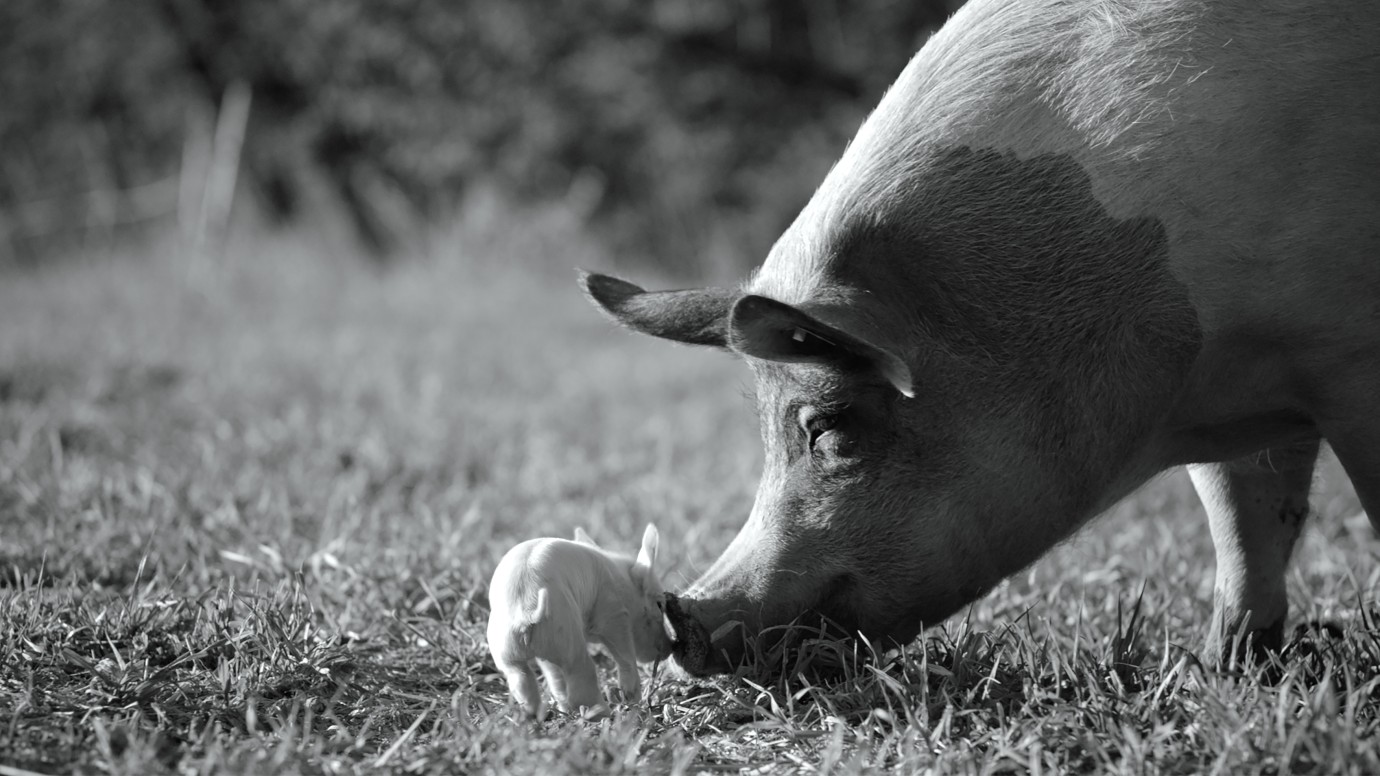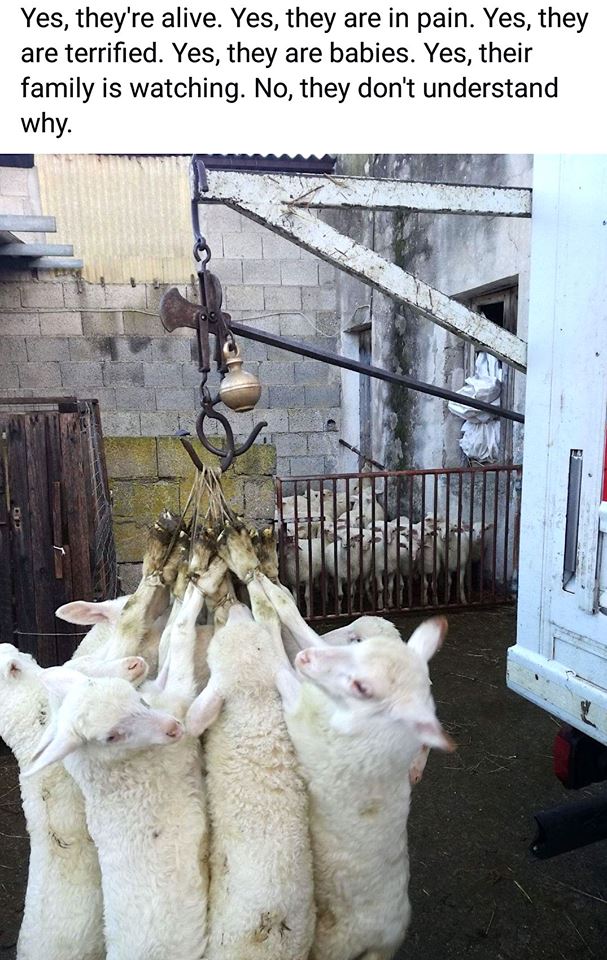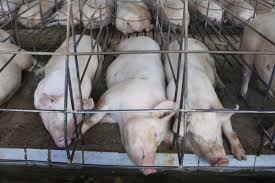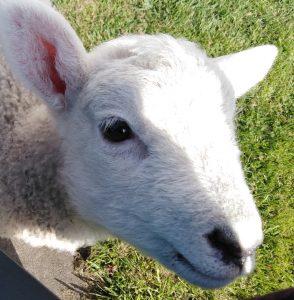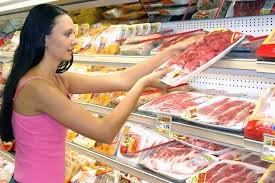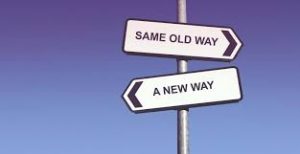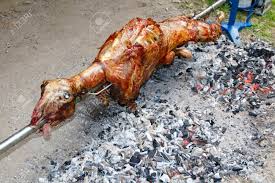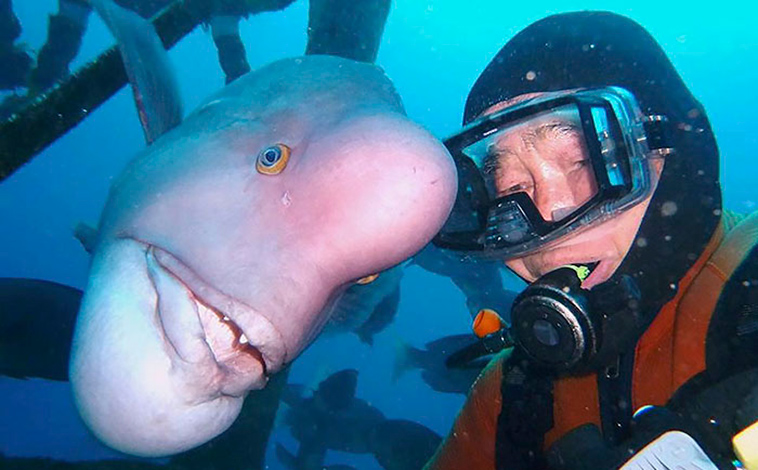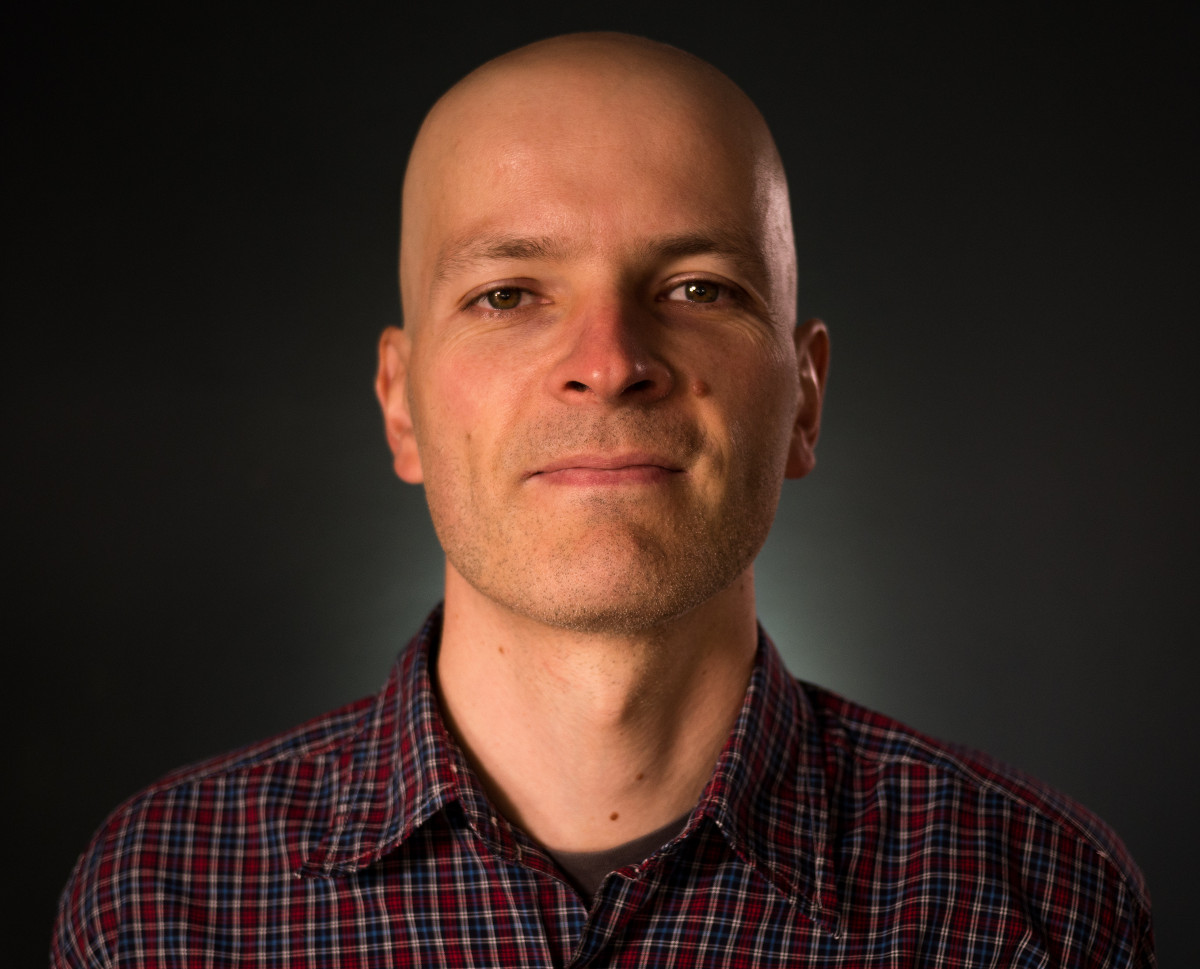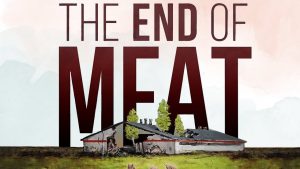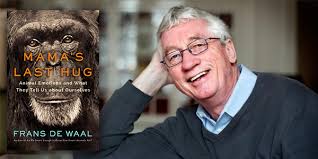In this article End Animal Slaughter contributor Lynley Tulloch claims that the suffering of animals sent to slaughter is far from instantaneous. (All photos taken at slaughterhouses in Whanganui, New Zealand, by Sandra Kyle)
A recent article in Stuff claimed that “meatworks are ‘gory and messy and nasty’, but the slaughtering’s humane”. While the article acknowledges the stressful process of transportation of animals, it makes the assertion that the killing itself is painless. It claims that the stunning process that immediately precedes the actual slaughter is instantaneous, and renders the animal insensible while s/he is killed.
This may well be true, provided the stunning process is effective every time. And yet, I remain unconvinced that we can narrow the slaughter down to that one instant. I think it is important that we don’t separate the transportation and holding of animals in slaughterhouse pens from the actual slaughter, and consider how the whole process makes the animals suffer.
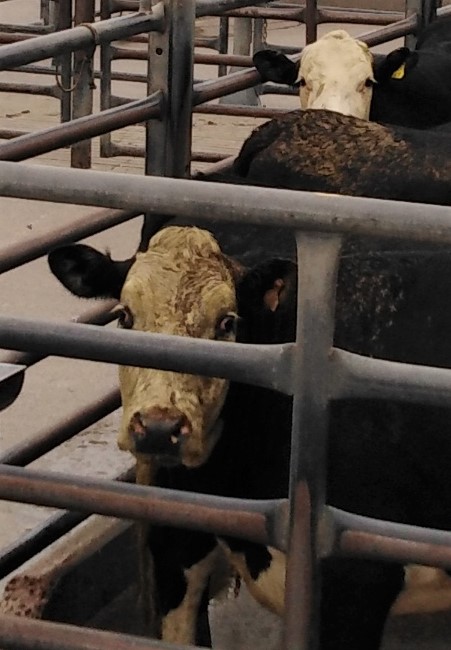 Cows waiting overnight at Land Meats slaughterhouse Whanganui, New Zealand, for slaughter the next day.
Cows waiting overnight at Land Meats slaughterhouse Whanganui, New Zealand, for slaughter the next day.
The Codes of Welfare governing animal slaughter and transport in New Zealand are woefully inadequate to prevent suffering on a mass scale. Animals sent to slaughter often travel long distances. It is a very uncomfortable journey. They travel in filthy, hot and noisy carriages, putting up with exhaust fumes and slippery floors covered in urine and excrement. It’s not exactly the Orient Express.
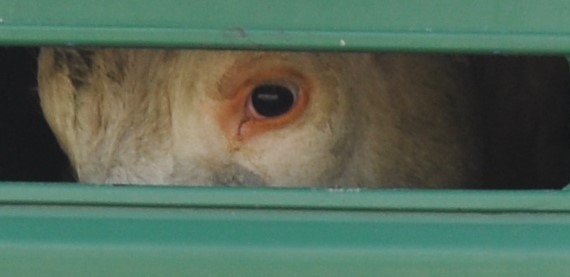
Animals going to slaughter travel in open trucks in all weathers, and stand on slippery floors covered with their own excrement.
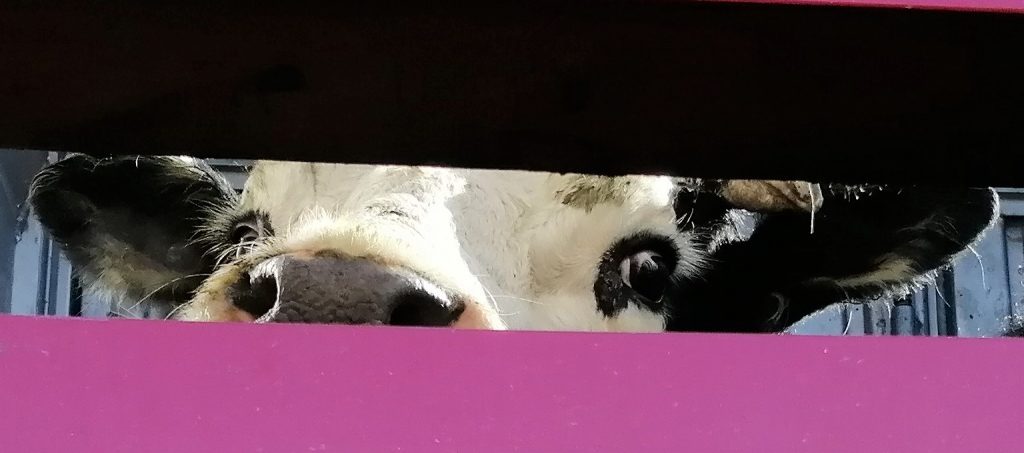
New Zealand has a Code of Welfare for Transport . I think that most people accept this as evidence that animals have their welfare needs met during transport. Yet even when adhering to this Code animals suffer horrendously. The Code sets a minimum standard for the time between which animals must go without water. For ruminants such as cows this is 24 hours. If the ruminants are pregnant or lactating, then it is 12 hours. This is timed from the period within which water is first removed to within 2 hours of arrival at the slaughterhouse. Mature animals also do not need to be unloaded for rest for 24 hours.
The implications of the above minimum standard are enormous in terms of animal suffering. Adult animals can legally be on a truck for 24 hours, and during this time may not be offered water or rest. They also can legally go without food for 36 hours.
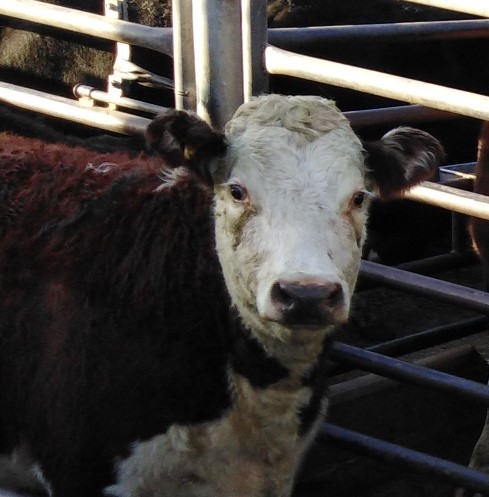 Animals are often already hungry when they arrive at the slaughterhouse, and are legally permitted to go without food for 36 hours before their slaughter.
Animals are often already hungry when they arrive at the slaughterhouse, and are legally permitted to go without food for 36 hours before their slaughter.
In short, it is legal to transport mature animals for 24 hours without rest, water, or food in a hot and smelly truck. For young 4- 10-day old calves they can legally go 12 hours on a truck and 24 hours without milk. ‘Milk lambs’ (those still being fed by mother) can legally go 28 hours without a feed before being slaughtered. This is the high animal welfare standards New Zealand boasts of.
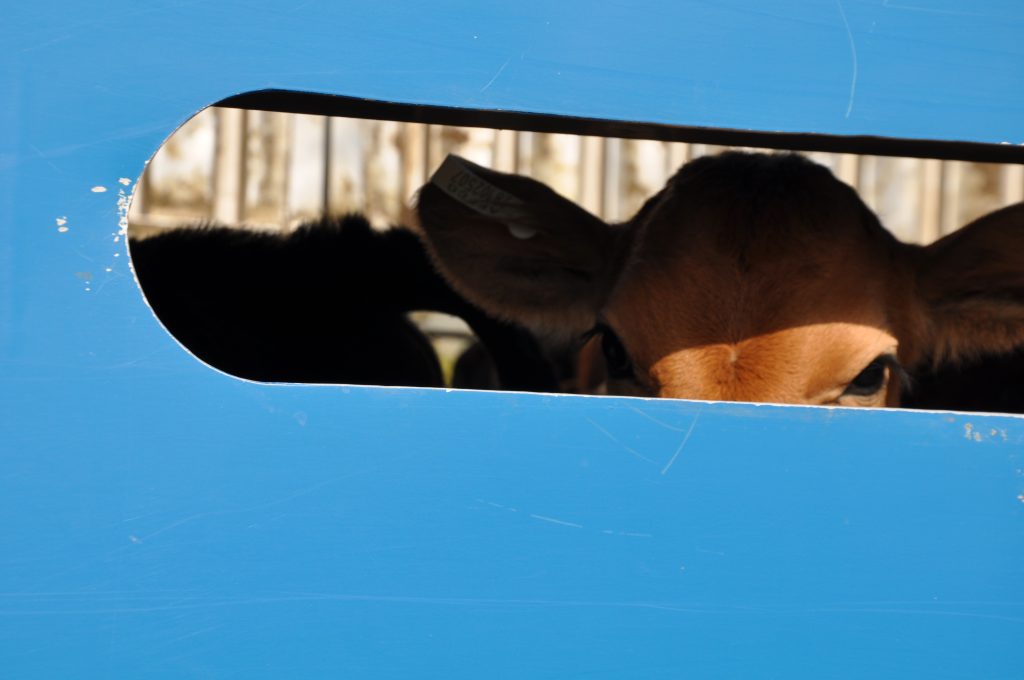 Bobby calves (surplus to requirements and killed at a few days old) can legally go 24 hours without milk and spend up to 12 hours travelling to their slaughter.
Bobby calves (surplus to requirements and killed at a few days old) can legally go 24 hours without milk and spend up to 12 hours travelling to their slaughter.
Once at their destination the animals are loaded into pens where they wait for their turn to die. This video (non graphic) shows animals at a slaughterhouse in Whanganui, New Zealand, taken by animal rights activist Sandra Kyle on February 22, 2021.
https://www.youtube.com/watch?v=XI7uXunetac
The temperature was in the 20 degree plus range, yet for most of the animals there is absolutely no shelter from the sun, and they are all packed in tightly. Yet the New Zealand Commercial Slaughter Code of Welfare states that:
“The lairage must provide adequate shelter from adverse weather conditions and ventilation to protect the welfare of the animals being held for slaughter.”
 Animals waiting in slaughter pens often have no shelter, and often have to wait for many hours packed in tightly.
Animals waiting in slaughter pens often have no shelter, and often have to wait for many hours packed in tightly.
We can see that the New Zealand Animal Welfare codes are at most a ‘best practice’ guide, and are interpreted to benefit those in the Industry and not the animals themselves. In response to a recent query about animal transport, the Ministry for Primary Industries (MPI) replied:
‘Farmers send cattle for sale or slaughter for numerous reasons, including to reduce the stocking rate if feed is limited and to remove unproductive animals from the herd. The reason why an animal is sent for slaughter is not recorded.
All livestock transported to slaughter should have a comfortable and safe journey, arriving in a fit and healthy state. It’s the responsibility of farmers to make sure cows are adequately prepared for transport, able to withstand the stress of travel, and are handled in a manner that minimises stress and injury’.
Although it is an offence to transport cattle late in pregnancy unless they are travelling with veterinary certification, every year in New Zealand there are cases of animals giving birth either during transport or at the slaughterhouse itself. In 2020, 50 infringement notices of $500.00 were issued to farmers who sent their cattle in late stages of pregnancy to be slaughtered. While some births are on the truck, the majority are in the holding pens. The Commercial Slaughter Code of Welfare states:
“When animals give birth in the holding pens, the welfare of both dam and offspring must be protected.”
Exactly how they should be protected is not specified, again leaving it open to interpretation. It is highly disturbing that any animal would begin their life in a slaughterhouse, even more disturbing that the newborn calf is immediately then killed. And of course, after giving birth the mother will then be slaughtered herself.
If the calf has not birthed, then the regulations during the slaughter of pregnant cows is for the calf to remain in utero “for at least 15-20 minutes after the maternal neck cut or thoracic stick.” If the calf shows any sign of life after being removed from the womb it must be immediately stunned and killed.
This ‘best practice’ presents unique ethical issues. Does the unborn calf feel pain? The World Organization for Animal Health (OIE) reports that calves in utero are insentient and unconscious due to neuro–inhibitors in the brain. However, the ability of calves to feel pain in utero, especially in the third trimester, cannot be ruled out entirely.
Cows may also be lactating when sent to slaughter. The regulation for lactating cows in New Zealand are as follows:
“Lactating dairy cattle with distended udders must be slaughtered within 24 hours of arrival unless milked.”
It is, in my opinion, unethical that lactating cows stand in a holding pen for any length of time, let alone 24 hours, dripping milk from their distended and painful udders.
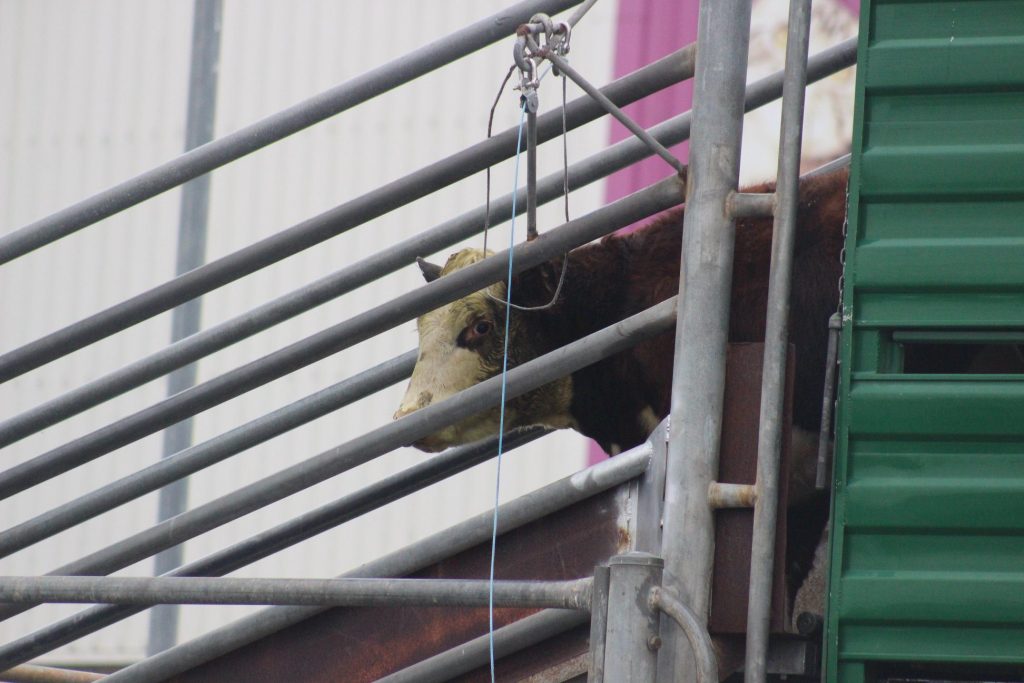 One last look at freedom
One last look at freedom
The above instances of transport, waiting in holding pens, and giving birth at the slaughterhouse are examples of how inadequate our codes are to protect helpless animals sent to slaughter. It is time to squarely face how we regulate the lives of animals to profit ourselves at the same time causing them great pain and distress. What we are doing is not in any way ‘humane’ and does not come under the umbrella of ‘welfare’. Similarly, we cannot narrow ‘slaughter’ down to the one instant in which the animals heart is stopped. It is just one small part of a long journey to death for farmed animals. Death by a thousand cuts.
You have a choice not to be a part of this horror story. Please choose compassion over suffering, and eat a plant-based diet.
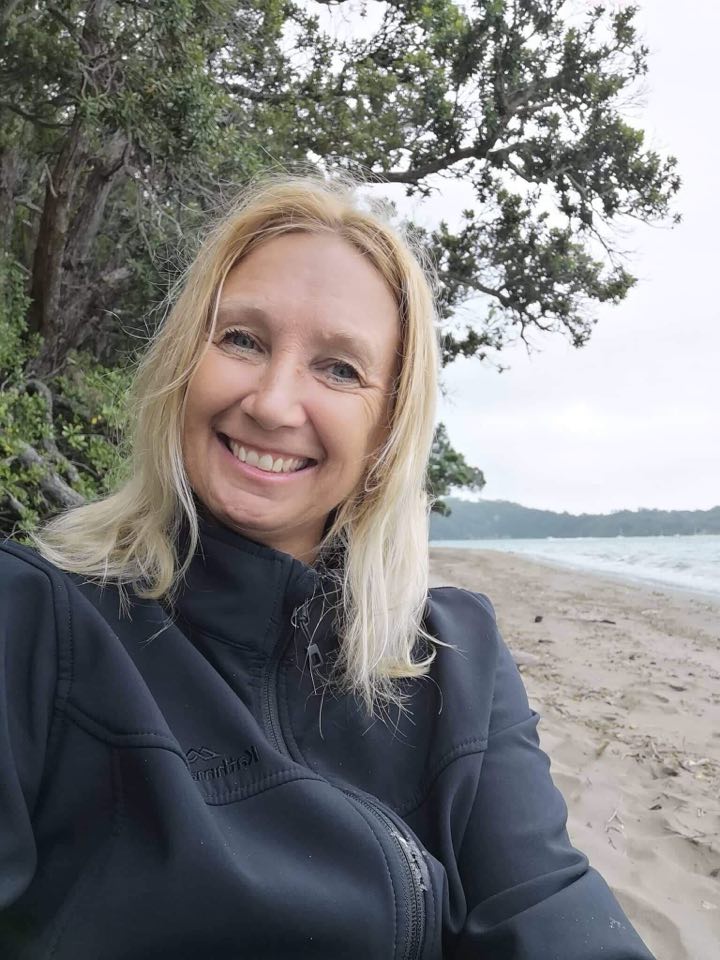 Dr Lynley Tulloch is an animal rights activist and writer, and has a PhD in sustainability education and ecocentric philosophy.
Dr Lynley Tulloch is an animal rights activist and writer, and has a PhD in sustainability education and ecocentric philosophy.
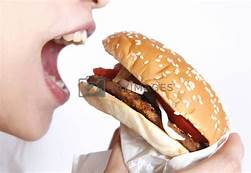

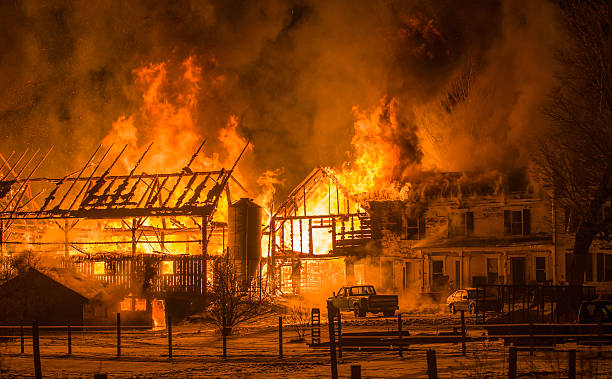
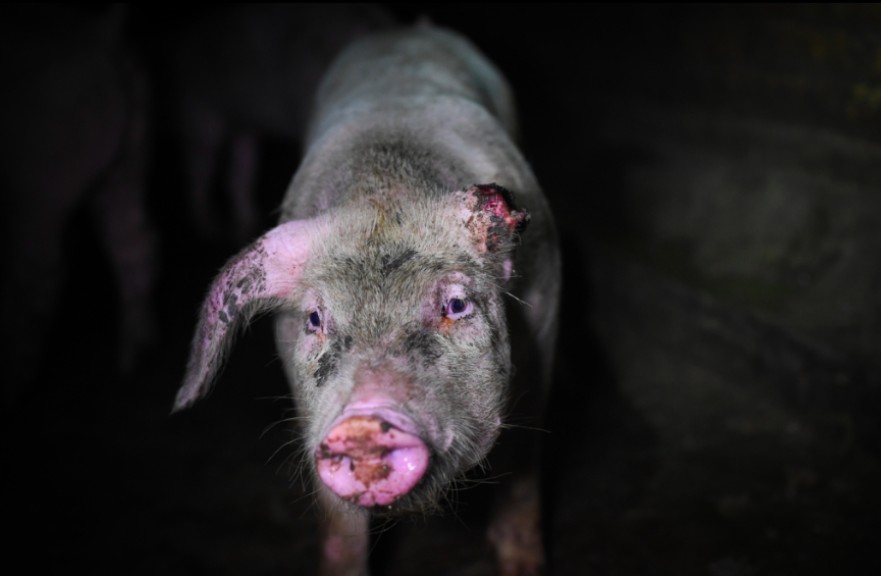
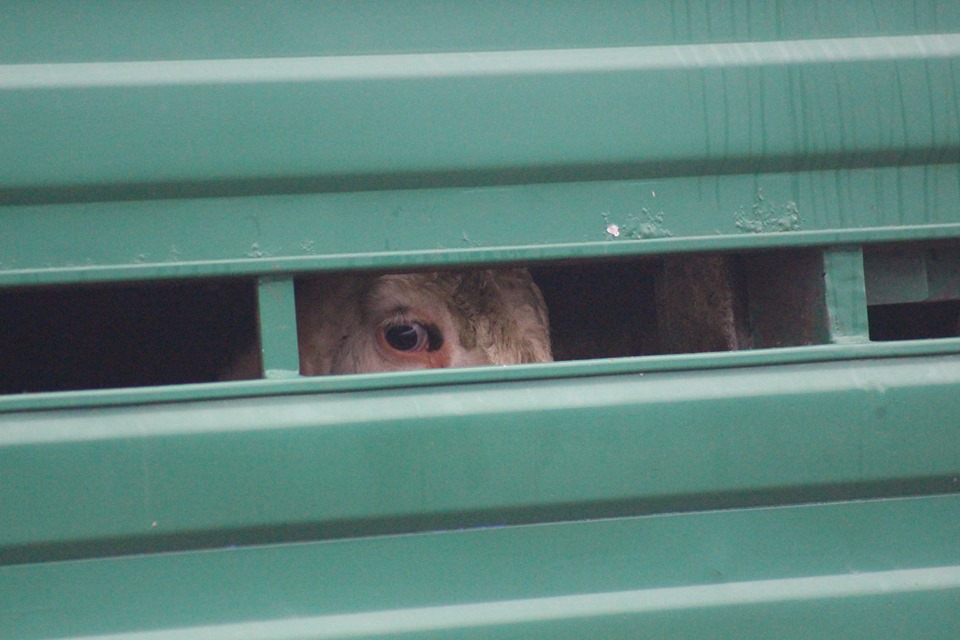
 Cows waiting overnight at Land Meats slaughterhouse Whanganui, New Zealand, for slaughter the next day.
Cows waiting overnight at Land Meats slaughterhouse Whanganui, New Zealand, for slaughter the next day. 

 Animals are often already hungry when they arrive at the slaughterhouse, and are legally permitted to go without food for 36 hours before their slaughter.
Animals are often already hungry when they arrive at the slaughterhouse, and are legally permitted to go without food for 36 hours before their slaughter.  Bobby calves (surplus to requirements and killed at a few days old) can legally go 24 hours without milk and spend up to 12 hours travelling to their slaughter.
Bobby calves (surplus to requirements and killed at a few days old) can legally go 24 hours without milk and spend up to 12 hours travelling to their slaughter.  Animals waiting in slaughter pens often have no shelter, and often have to wait for many hours packed in tightly.
Animals waiting in slaughter pens often have no shelter, and often have to wait for many hours packed in tightly.  One last look at freedom
One last look at freedom Dr Lynley Tulloch is an animal rights activist and writer, and has a PhD in sustainability education and ecocentric philosophy.
Dr Lynley Tulloch is an animal rights activist and writer, and has a PhD in sustainability education and ecocentric philosophy.